Strange Shapes in the Sky
In the meantime, wartime development of military aviation overwhelmed Wright Field in Ohio with an immense volume of flight test work. It was necessary to find a remote location with good flying weather where a new top-secret airplane could safely undergo tests.
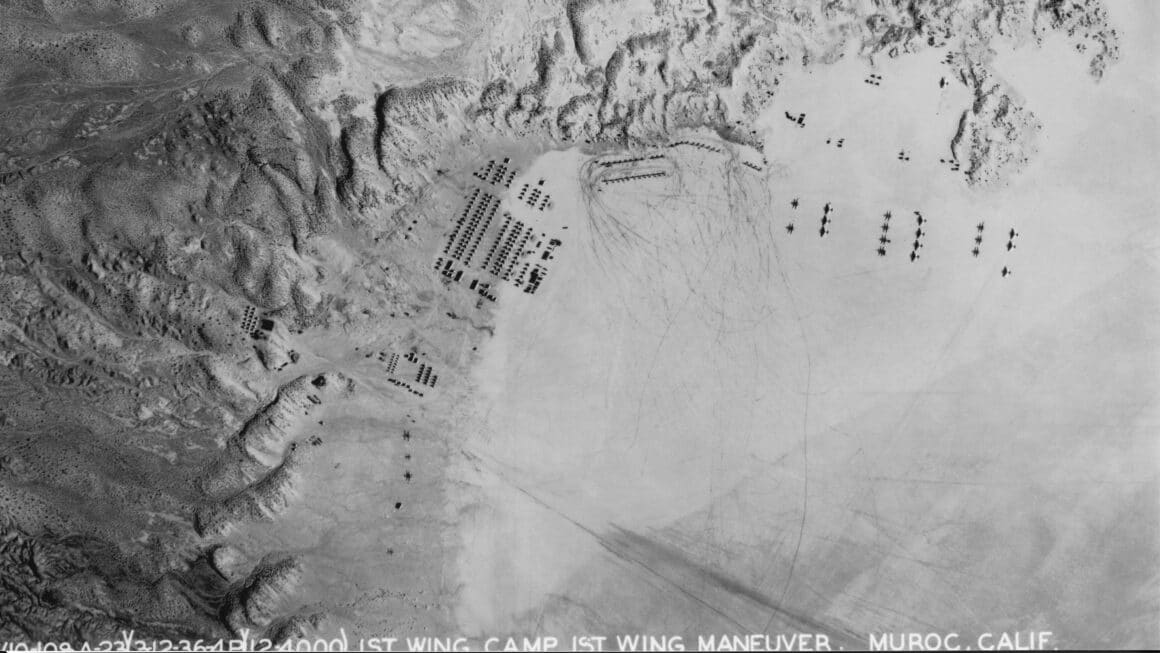
In the spring of 1942, a site was chosen alongside the north shore of Rogers Dry Lakebed, about six miles away from the training base at Muroc. A wooden hangar and rudimentary facilities sprang up. On 1 October 1942, Bell test pilot Bob Stanley lifted the wheels of the Bell XP-59A Airacomet off the enormous, flat surface of the dry lakebed. The turbojet revolution had arrived. America’s first jet plane would be joined shortly by a second, the famed Lockheed XP-80 Shooting Star.
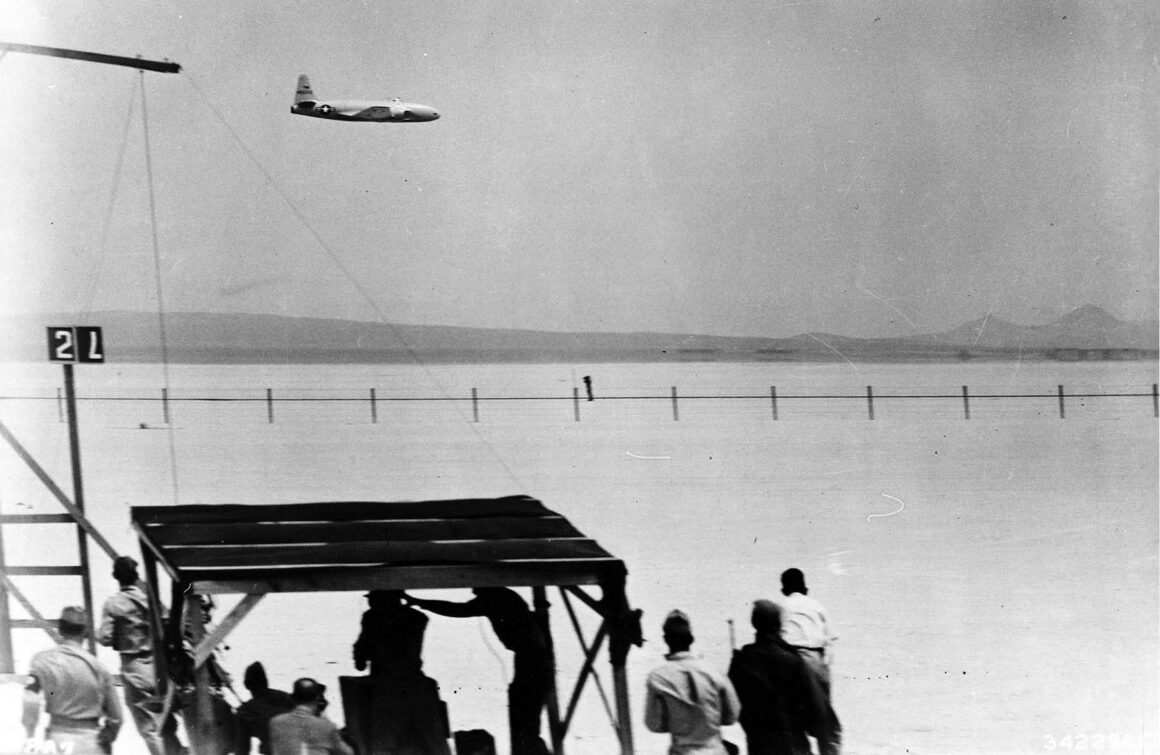
The Heyday of Edwards Air Force Base
During the postwar years, all of America’s first generation of jets—both Air Force and Navy—underwent testing at Muroc, and the great lakebed served as a welcome haven to countless pilots in distress. The success of these programs attracted a new type of research activity to the base in late 1946.
The rocket-powered Bell X-1 was the first in a long series of experimental airplanes designed to prove or disprove aeronautical concepts, probe the most challenging unknowns of flight, and solve their mysteries.
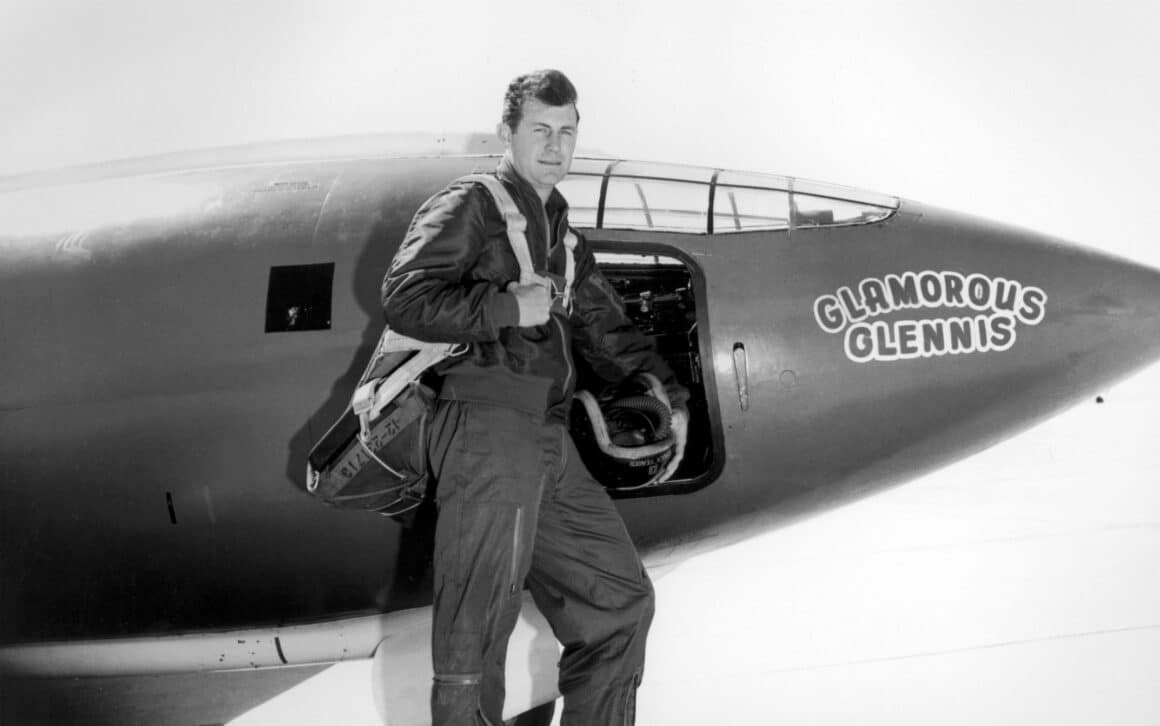
On 14 October 1947, Captain Charles E. “Chuck” Yeager flew the small bullet-shaped airplane to become the first human to officially exceed the speed of sound. With the X-1, flight testing at Muroc began to assume distinct identities.
Highly experimental research programs such as the X-3, X-4, X-5, and XF-92A were typically flown in conjunction with the National Advisory Committee for Aeronautics, or NACA, and were conducted methodically to answer largely theoretical questions. Then, as now, the great bulk of flight testing at Muroc focused on evaluating the capabilities of aircraft and systems proposed for the operational inventory.
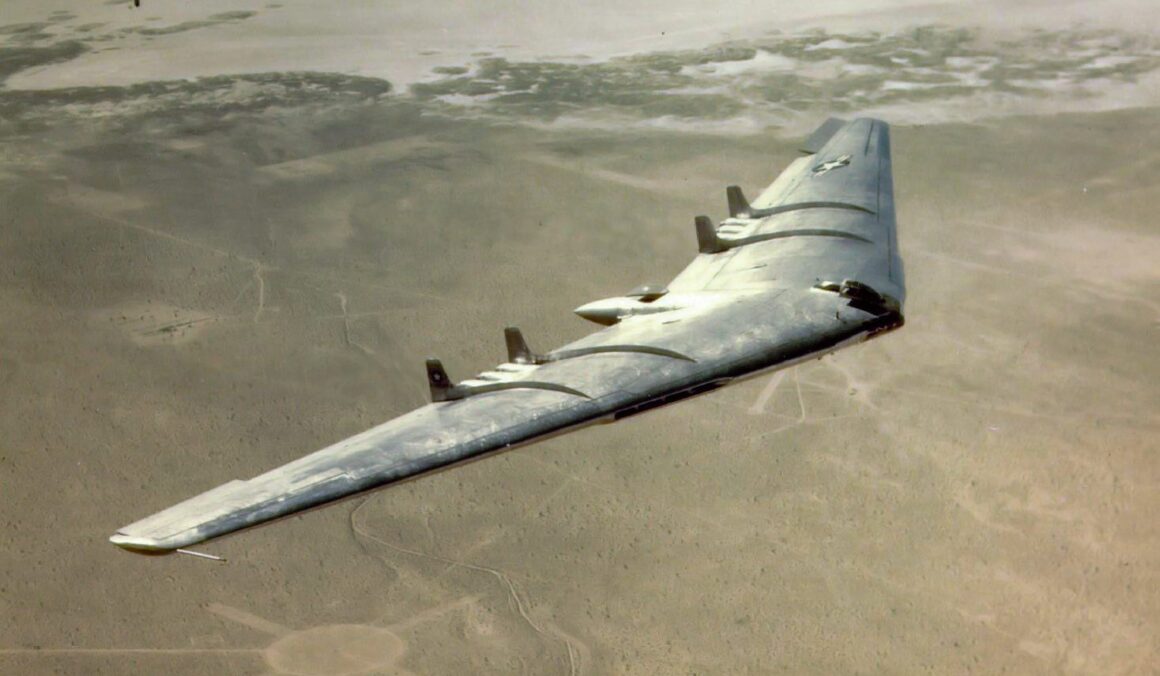
A New Name, A New Mission
In December 1949, Muroc was renamed Edwards Air Force Base in honor of Captain Glen W. Edwards, who was killed a year earlier in the crash of the Northrop YB-49 Flying Wing. In 1951, the US Air Force Test Pilot School moved to Edwards from Wright Field, Ohio.
Its curriculum focused on the traditional field of performance testing and the relatively new field of stability and control, which had suddenly assumed critical importance with the dramatic increases in speed offered by the new turbojets.

By that time, the base had already become the reigning center of American flight research. On 25 June 1951, this fact was finally officially recognized when its test community was designated the US Air Force Flight Test Center, Edwards Air Force Base.
Arriving at Today
Flight testing at Edwards has come a long way since the first olive drab XP-59A lifted off from the lakebed more than 60 years ago. Over the years, the US Air Force and the world of aerospace have continued to meet the future in the clear blue skies above the base. Every single aircraft to enter the Air Force’s inventory, and a great many that failed to do so, has been put through its paces at Edwards. Some Navy and Army aircraft underwent testing here as well.
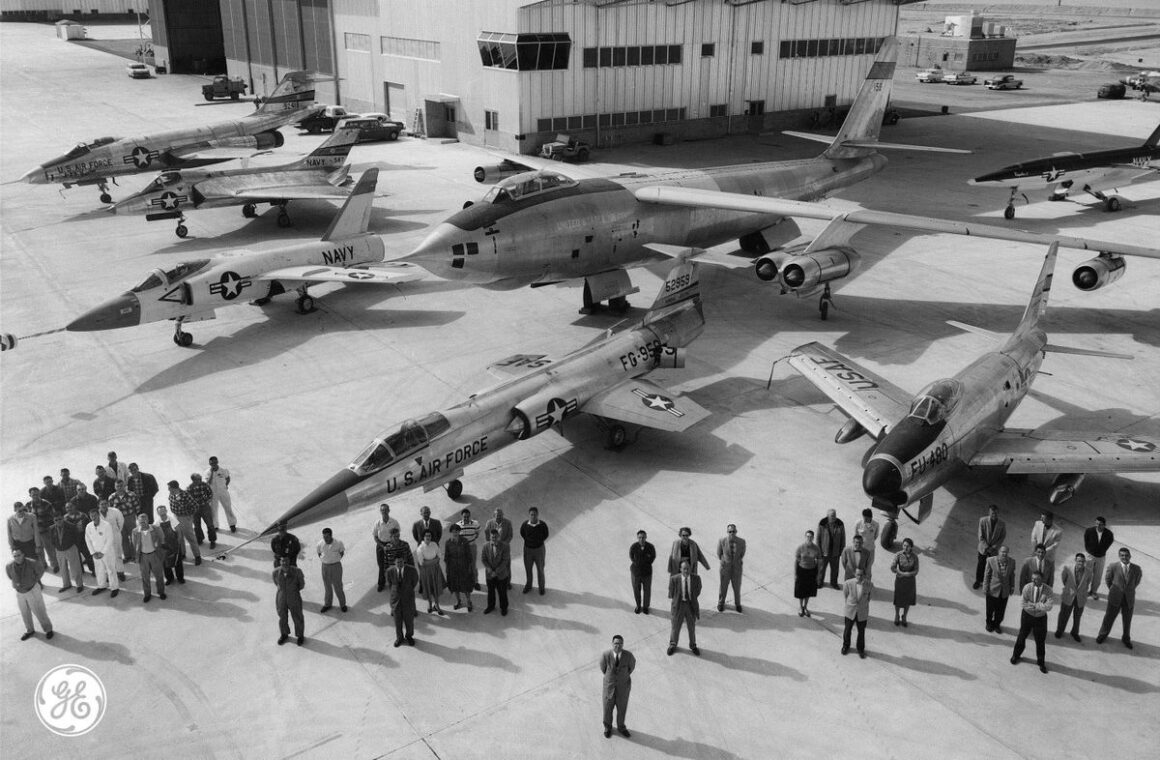
Arguably, more significant milestones in flight have occurred at this base than anywhere else in the world. The demands of the Global War on Terrorism and the ever-accelerating pace of technological change over the past half-century have been daunting. Still, the Edwards flight test community repeatedly demonstrates its ability to adapt to these changes and to master the many challenges they impose.
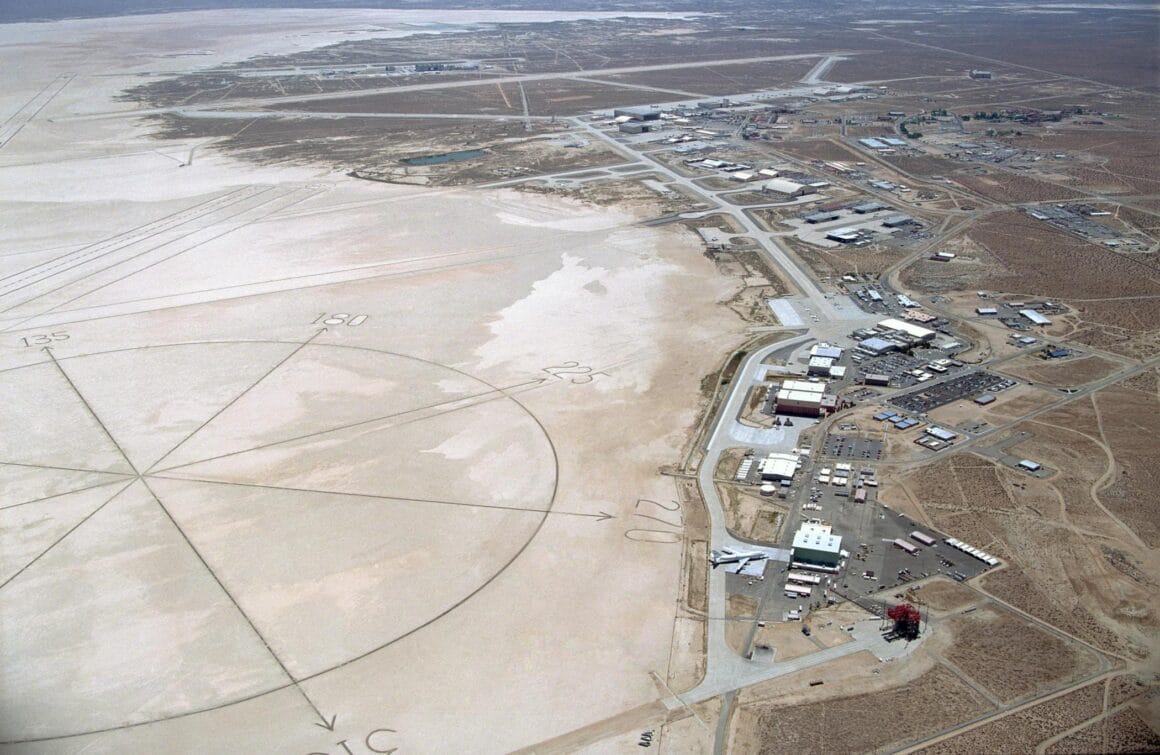
The turbojet revolution, the space revolution, the systems revolution, and now the unmanned aircraft systems revolution have imposed seemingly insurmountable obstacles. Each barrier, however, has been overcome through a combination of technical aptitude, daring ingenuity, and skillful management. Indeed, the Air Force Test Center’s unique blend of natural, technical, and human resources has transformed it into something much more than a benefit to the Air Force; it is an irreplaceable national asset.
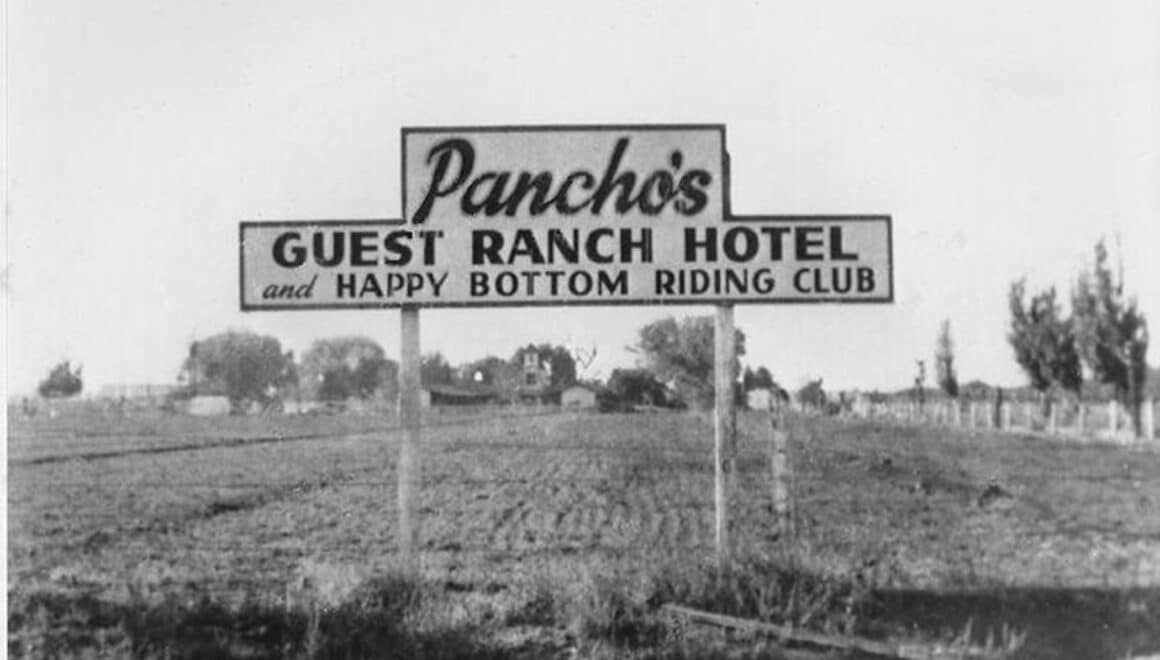
Some original text by the US Air Force Flight Test Museum was edited by the author.
